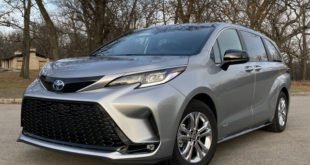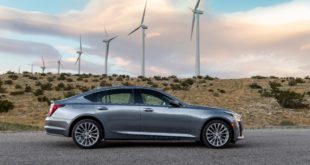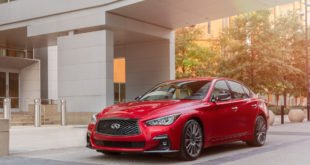Driver assistance systems such as Tesla’s Autopilot and Cadillac’s Super Cruise lull drivers into a false sense of security and can increase the risk of a crash, the IIHS found in a report released Thursday.
In the wake of high-profile fatalities caused by drivers using driver assistance systems, and in the void of federal oversight, the IIHS urged automakers to create better methods to ensure driver engagement and more limits on how and when the systems can be used.
Paradoxically, as the systems become better, they also become more dangerous.
“Unfortunately, the more sophisticated and reliable automation becomes, the more difficult it is for drivers to stay focused on what the vehicle is doing,” David Harkey, IIHS president, said in a statement. “That’s why systems should be designed to keep drivers actively engaged.”
Ceding control to the car “increases the temptation to do other things, such as text or check email,” the report says.
Most systems available today feature adaptive cruise control with active lane control that can increase or decrease the speed of the vehicle based on traffic, as well as keep a vehicle centered in its lane without driver input. Periodic warnings every half minute or so force the driver to put their hands back on the wheel to ensure driver engagement. This is considered Level 2 of the five levels of driver assistance, according to the Society of Automotive Engineers. Level 5 is full autonomy, where a vehicle can travel from point to point without driver interaction. While some concept and prototype vehicles are capable of Level 5, the current infrastructure and mindset is not.
“These systems are amazing feats of engineering,” Alexandra Mueller, lead author of the IIHS recommendations, said in a statement. “But they all suffer from the same problem: They don’t account enough for the behavior of the human being behind the wheel.”
A driver of a Tesla Model X playing a video game on his cell phone was killed when Autopilot didn’t detect the lane markings of an exit ramp and slammed into a concrete divider.
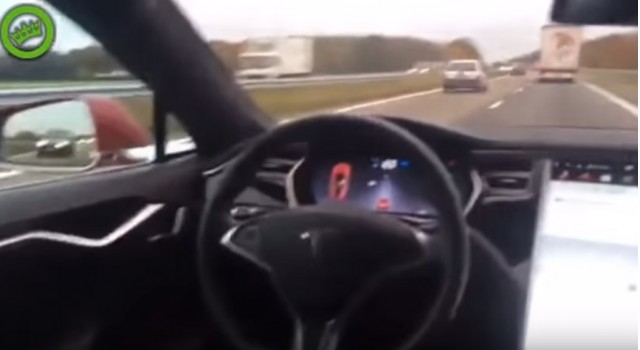
Tesla Model S owner tests Autopilot system from back seat
Even though Level 5 is distant, some automakers, such as General Motors with Cadillac’s Super Cruise system, offer advanced Level 2 systems, where the vehicle can drive for hours on certain highways without driver engagement. It can change lanes if the driver clicks the indicator, same as systems from Tesla, BMW, and Mercedes-Benz. The IIHS says this creates a false sense of security and the systems should be designed to share control with the driver, instead of the system disengaging if the driver begins to steer.
Furthermore, the IIHS says there should only be steering feedback from the system if the vehicle reaches the edge of the lane, and less so if a driver wants to steer in a curve or if another vehicle merges into the adjacent lane.
“Drivers feel more comfortable with systems that don’t fight their input, especially when navigating curves and making other challenging maneuvers,” Harkey said.
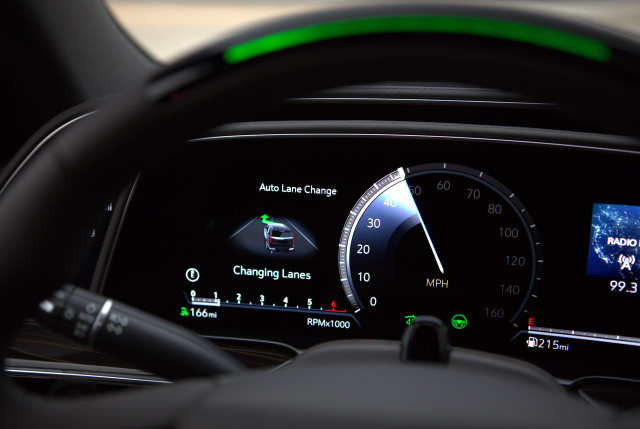
Cadillac Super Cruise with automatic lane change
Monitoring of drivers also needs improvement and standardization, the IIHS urges. Most systems require the drivers to periodically place their hands on the wheel. The most advanced system, Super Cruise, uses a camera in the steering wheel that faces the driver to monitor head position and eye level to make sure eyes are on the road, not in their lap or closed. If the system detects flagging attention, there will be a series of escalating warnings, starting with the light bar on the steering wheel flashing green, then flashing red with audio warnings and/or seat vibrations. If that still doesn’t get the driver to steer, a voice prompt commands the driver to take over, or else the vehicle will eventually brake to a stop in that lane.
The IIHS urges every automaker to further this by escalating each alert, increasing the following distance, pulse the brakes, then, if there is still no response from the driver, deploying hazards and getting the vehicle onto the shoulder.
